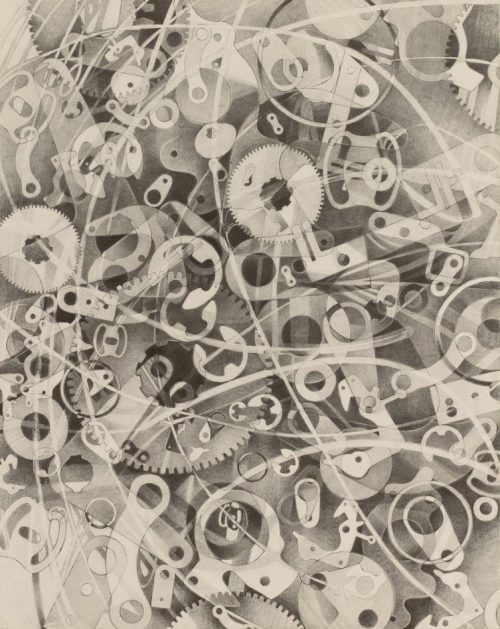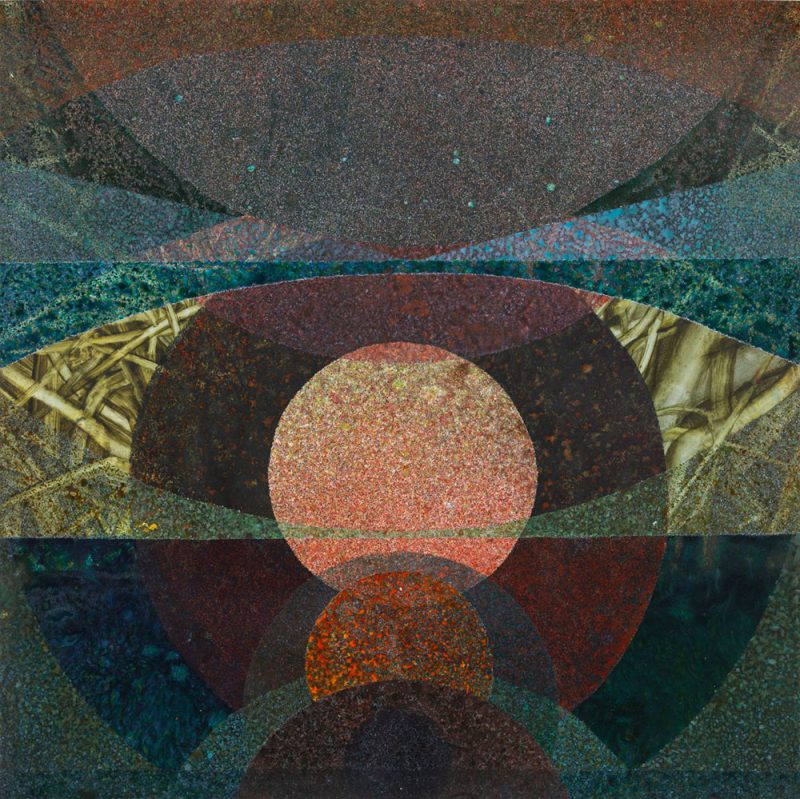by Mark Van Proyen

For longer than anyone can remember, summer group shows have been an art world ritual. Usually, they anthologize unsold examples from the previous season of exhibitions; at other times, they function as trial balloons, testing market interest in the work of artists under consideration for future projects. Rarely do they demonstrate the kind of curatorial focus and coherence that we see in Contemporary Asian American Abstraction, a gathering of 16 works by six artists.
The title of this exhibition suggests an awkward reductivism, first by implying that everyone from Mumbai to Tokyo shared a common cultural ancestry. The American part is easier to understand, as it pertains to the pragmatics of form and material stripped of metaphysical connotation, reminding us of the old homily — that for most of the world, a forest is a place of unknowable magic, while a settler-colonialist American sees it as a lumber yard waiting to happen. Contemporary Asian American Abstraction does a great job of bridging these contradictions. It does so by presenting paintings that resolve figure-ground distinctions by denying both. In the predominant western tradition, the figurative protagonist is usually depicted as standing against the world, heroically triumphing over it in most cases. Even unpopulated landscapes start to look like idyllic invitations for future real estate investments. With a few exceptions, Asian traditions tend not to embrace the heroic protagonist, preferring to celebrate a mystical, non-dialectical understanding of natural phenomena and any human participation within it.

This bridging manifests in a kind of spatial illusionism that has been labeled “potential space.” Even though he lifted it from the British psychoanalyst Donald Winnicott, art critic Adrian Stokes gets credit for coining the term by pointing to how Jackson Pollock’s paintings simultaneously moved toward graphic flatness and the “thereness” of a deep albeit indistinct space, showing the becomingness of form as a part of that form’s visible manifestation. To a greater or lesser degree, all the works in this exhibition take recourse to the use of potential space. In Grace Munakata’s Propellers (2011), we see a mélange of overlapping shapes articulated in bight acrylic colors running thin to thick, blooming like a bouquet of ebullient flowers in the mind’s eye. Three works by Sono Osato move away from the biomorphic by featuring clusters of disconnected mechanical objects such as sprockets and fasteners. These are rendered as if viewed from above a mechanic’s junk drawer, looking like high-resolution sonograms that channel Man Ray’s Rayographs from the 1920s. In these works, Osato uses a rare technique that fuses rabbit skin glue to subtle tints of ethereal color to create an eerie luminosity.
Mary Ijichi’s four mixed-media works, executed on multiple layers of frosted mylar, are the standouts in the exhibition. Each is titled Assemblage with a different number, three from 2023 and one from 2022. Each of these works is set up on a complex grid of pearlescent color, where meticulous additions of dozens of regimented marks are arrayed across the outer surfaces. Brighter colors emanate from below to produce stunning chromatic vibrations that would make Agnes Martin weep with envy. In a similar albeit more subdued vein, Joshua Moreno’s pair of graphite-on-paper works also seem ethereal, taking up small portions of the white expanses upon which they were executed. Each configuration is a subdivided square formed of unstable lines that seem to be schematic read-outs describing an extra-terrestrial topography.

Three works by Sandeep Mukherjee also explore the possibilities of square formats that allude to science fiction landscapes. All sport stunning color, looking like thermographic images of distant terrains. Stunning color is also evident in Ekta Aggarwal’s trio of fabric collages, featuring irregular patches of brightly colored scrap fabric precisely stitched together into torqued configurations. The pulsation of color relationship in these works is eye-catching and hypnotic, keeping the beholder off balance just enough to ensure repeated observation.
# # #
“Contemporary Asian American Abstraction” @ Paul Thiebaud Gallery through August 17, 2024.
About the author: Mark Van Proyen’s visual work and written commentaries emphasize the tragic consequences of blind faith in economies of narcissistic reward. Since 2003, he has been a corresponding editor for Art in America. His recent publications include Facing Innocence: The Art of Gottfried Helnwein (2011) and Cirian Logic and the Painting of Preconstruction (2010). To learn more about Mark Van Proyen, read Alex Mak’s interview on Broke-Ass Stuart’s website.